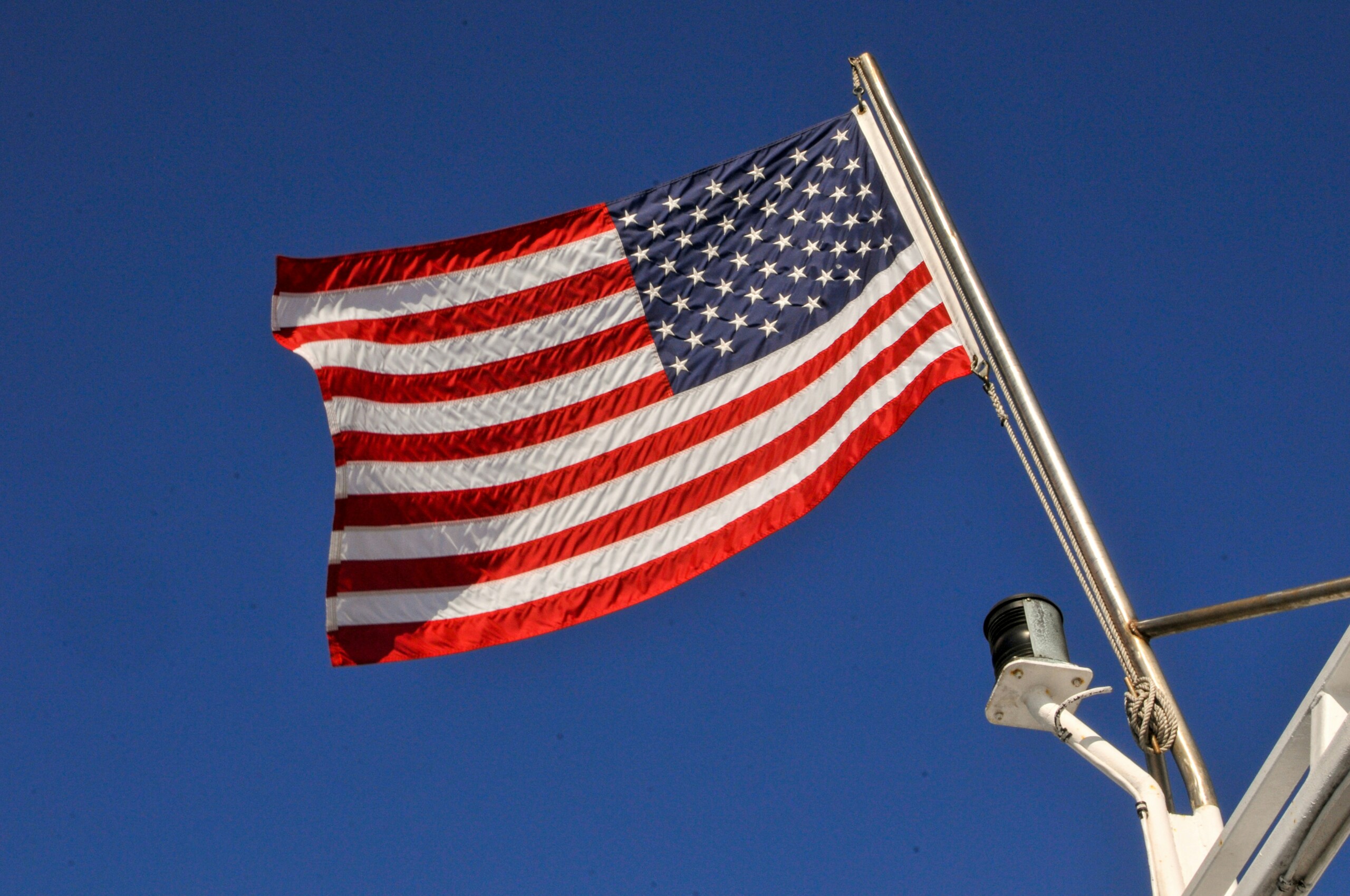
Democracy and Solidarity: On the Cultural Roots of America’s Political Crisis.
James Davison Hunter wants us to know things look bad because they are bad and have been so for quite some time: the United States is not only facing stark polarizations in our time, but, he argues, these polarizations are a result of the longstanding fault lines within our foundations for democracy. In this long-awaited text, Hunter makes something of a return to his Culture Wars (1991) thesis: “fault lines already established between elites and the general public and between the Left and the Right become open cleavages by the 1980s. . . . Indeed, for quite some time, the culture that has underwritten liberal democracy in America (and in Europe too) has been unraveling.”1
Hunter is a rigorous sociologist with an impressive command of American political history, philosophy, and culture: he offers a detailed, compelling, worthwhile account of how we got to this point of political crisis. In fact, his endnotes are so good, I wish they were footnotes; even more than that, I wish much of the rich research in his endnotes had been baked into the heart of the text. But that would make a 383-page text even longer.
Hunter contends that the “hybrid enlightenment” foundation for our democracy is waning; in its place is nihilism, “a narrative of injury that seeks revenge through a will to power” (18). It threatens to leave our democracy even more fragile, with propensities for violence even more likely.
Indeed, Hunter makes a convincing and worrisome case that hybrid enlightenment, a synthesis of Enlightenment and religious ideals, or some future comparable set of common beliefs and ideals, is fundamental to the undergirding of our democracy. Hybrid enlightenment (HE) has provided the cultural soil in which democracy could take root and grow.
This book is worth reading and its overall argument is persuasive. But I will note three primary concerns I reference throughout. First, there is an American exceptionalism presumed here. The book would have benefitted greatly from more comparison with other nations faced with such dilemmas and their varied trajectories and attempted remedies. Second, given his expertise, he offers a significant focus on culture (at times to the neglect of economics and institutions). He acknowledges this is so, but then insists those latter factors are overemphasized in the social sciences;2 as a political scientist I’m still left wanting more discussion of those factors and remedies, as cultural remedies are slow to evolve. Third, he does not think it his duty to show a clear way out, but rather to show us how we got here (he’s more a prophet than a priest); here again, comparison would help. Why did many European and Latin American nations after WWII turn to Christian Democracy to deepen democracy in order to avoid fascist or socialist totalitarianism? Currently, why are some countries looking to Muslim, Christian, Hindu, Buddhist, Jewish, or Maoist nationalism to maintain solidarity? Alternatively, how are strong liberal democracies holding onto democracy and supporting one another in the process? Hunter can’t do everything, but after reading his tough diagnosis, I longed for more answers situated in the above.
Hunter opens the book with wonderful quotes from Reinhold Niebuhr, Abraham Lincoln, and this one from Frederick Douglass (July 5, 1852), which I think best captures the essence of this text: “Notwithstanding the dark picture I have this day presented of the state of the nation, I do not despair of this country. ‘The arm of the Lord is not shortened,’ and the doom of slavery is certain. I, therefore, leave off where I began, with hope.” Throughout his account of our political history, Hunter highlights key American intellectuals who have understood the way culture provides a foundation for democracy: my favorite accounts were those of Angelina Grimké,3 Frederick Douglass, Martin Luther King Jr., and Reinhold Niebuhr.
While Hunter paints a grim picture of our nation, I do think he holds onto hope, though I wish more was articulated in this book. He sees the potential within liberal democracy for a course correction, though in addition to his and others’ noble ideas for recovery, I wanted a comparable number of examples as to why I should have hope.
There are many culprits responsible for the decline of democracy. A common cause is the tendency of various political camps to presume an opposing camp is entirely at fault whatever the issue, and to retreat to one’s preferred media sources, which spin information affirming such self-serving thinking. Other scholars point to the loss of social capital and the weakening of civil society and participation (e.g., see Robert Putnam’s Bowling Alone4). Solutions range from a call to renewal of such institutions, the improvement of civic education, better public policy, and even Christian revival (Hunter references Os Guinness and G. K. Chesterton, but today I’d point to the surprising suggestion of such by a secular Jew, Jonathan Rauch, previously skeptical of the utility of religion).5 Hunter finds these factors and remedies worth consideration but sees them as insufficient to address the problem. And trying to establish solidarity from the top down is also not viable in his estimation.
According to Hunter, our HE ideals historically gave us an indispensable means of solidarity and included the means of “working through” our contradictions and inadequate inclusion of all (ideals promising freedom, equality, justice, and tolerance). HE has been flawed, to be sure (he highlights the history of African American slavery and Native American genocide), but in addition to its noble ideals, there is within it a recognition of human limitations; power was made to check power institutionally and otherwise. His argument is that the United States worked through many of its contradictions over time with the guidance of key intellectuals like the ones he highlights, rather than the brute force of political leaders from above.
Hunter asserts that America’s HE came out of an Enlightenment project which “drew from many and assorted sources, most prominently biblical, classical, and Whiggish, and were synthesized philosophically, in large part, by the commonsense realists of the Scottish Enlightenment” (54–55). Unlike the French experience, many of those settling in the United States were religious dissenters, shaping America’s HE to be favorable to religion. Over time, with the Second Great Awakening, Hunter asserts that power transferred from leaders to believers and reinforced a millennial understanding of the role of the United States; this was a foundation for social reform, and eventually helped expand understandings of citizenship.
As for American solidarity, Hunter tracks its evolution and considers the ways in which we are and are not defined by E Pluribus Unum (Out of Many, One), our national motto proposed by John Adams, Benjamin Franklin, and Thomas Jefferson in 1776 (364). We were united through both negative solidarity (reaction to a common enemy/what we are not) and by affirmative solidarity (common affections, the American creed, respect for the United States constitution) (14). Here comparison would be informative. Doesn’t the United States lend itself to greater solidarity amidst deep differences than most nations because of its creedal rather than racial/ethnic/tribal foundation? How can the United States use this reality to its advantage in recalling its roots and capacity for solidarity?
Nearly one hundred years after our founding, with the Civil War the United States did arrive at a key crisis point on many fronts, including its identity. Hunter argues, “the conflict that gave rise to the Civil War was over the question ‘Who is a person?’—made concrete by the presence of racial difference—and ‘How should human beings treat other human beings?’—rendered jarringly tangible by the brutalizing realities of slavery” (128–129).
While the outcome of the Civil War helped undo slavery, as did subsequent constitutional amendments, Hunter maintains that the cultural underpinnings for slavery remained, and thus in practice, slavery reemerged in different shape under Jim Crow laws and practices. This confirms a primary thesis for Hunter, that laws are insufficient to change society. To be sure, religion did end up helping change culture over time, as many saw the victory of the North in millennial terms, with the United States then in a better position to fulfill its destiny. But Hunter thinks this effort did not win the day. Rather, traditional religion had taken both sides in the war with vigor, and thus discredited its standing in the public arena, paving the way for modern theology and Social Darwinism that followed, and new understandings of America’s promise and standing (140–141).
For Hunter, this experience contributed to the unmaking of America’s Christian Republic. Previously, most reform movements throughout American history were rooted in religion, but with industrialization, modernization, and the civil war that foundation began to shift too.6
While many still saw life in religious terms (especially Blacks), our society secularized over time. University boards went from being made up of pastors to businesspeople; journalism began professionalizing and made religion less a focus; legal positivism grew; the “wall of separation between church and state rose higher” (147).
Around the turn of the century, Protestants soon split. After the Scopes trial and H. L. Mencken’s account of it facilitated the humiliation of faith in 1925, more fundamentalist Protestants withdrew until the 1960s. While liberal Mainline Protestants responded to the pressures of the day with the Social Gospel, emphasizing orthopraxis or works over orthodoxy, Hunter assessed such to be inadequate to the task.
I’d insert here that some Protestants didn’t experience this divide so sharply, maintaining a focus on word and deed (e.g. African American churches, Anabaptists, the Salvation Army). As for Catholics, some of them, challenged by Pope Leo XIII in Rerum Novarum (1891), who called out the problems of capitalism, industrialization (and even socialism), were inspired to lean into and respond with Christian Democratic remedies, particularly in Europe and Latin America, and with union organizing and immigrant resettlement efforts in the United States. Hunter does acknowledge that John Courtney Murray helped convince the Catholic church of the need for pluralism and democracy via a natural law rationale but sees this as a repackaging of older formulations of HE; I’d consider it a more fundamental shift.
Hunter’s overall point is well taken, though: new efforts at undergirding democracy became more focused on reason (internally derived ideas) or on natural law (externally derived absolutes), and less so an amalgamation of the two, feeding eventually into a culture war. For instance, John Dewey had great faith in our capacity to reason our way to democracy and saw secular public education as a key means to further it. Fellow progressive and theologian Reinhold Niebuhr (someone claimed by both the right and the left) also wanted to solidify our foundations but called out Dewey for his utopian idealism and naivete about human nature and our capacities. Niebuhr emphasized original sin and the tendencies and power of institutions (collective sin), thus the need for power to check power. Yet Niebuhr also called out fundamentalists for withdrawing and not meeting the needs of the day, addressing racial injustice, etc. Altogether, Niebuhr contended that we needed the life-giving prophetic myths of Christianity and Judaism to counter myths of fascism and communism and break cycles of injustice; and to recognize that we are all capable of sin, that we are worthy because we’re made in God’s image, and that we are all called to forgive (166–167). I’d also add, Niebuhr took on the important role of making it clear why alternatives to democracy are costly. Democracies need to check other states and check themselves and their own tendencies toward evil within. As Niebuhr suggests, we choose democracy because of human nature, recognizing what could more readily follow without it, as subsequent iterations of autocrats or kings tend to be worse than the first (e.g. Maduro’s regime after that of Chávez in Venezuela).
By the mid-1900s, some conservative Christians began to re-engage as evangelicals, under the new National Association of Evangelicals, Christianity Today, etc. seeking “cooperation without compromise,” led by Billy Graham and others.
Many not included in the system pushed back in serious ways, famously represented by the Civil Rights Movement led by the Black church and Reverend Martin Luther King Jr. Unlike reform movements of the twentieth century that had dropped religious framing, the Civil Rights movement leaned on religion and external absolutes, e.g., that we are all God’s children. King pushed America to live up to its promises, its creeds, and thus be healed. He was “calling America to heed its better angels,” to love our enemies, as he did, calling out the sin/evil, loving the sinner/evildoer (200).
The 1960s were a time of great change, due in part to more significant and more diverse migration after the Immigration and Nationality Act of 1965 (from 9.6 million in 1965 to 44.8 million in 2018). It helped bring about more religious, racial, and ethnic diversity in the United States, including those unfamiliar with HE thinking. This was accompanied by a decline in civil religion and a growing distaste for the American project, given America’s roles in direct conflict, proxy wars, and its troubled domestic record. And with the end of Cold War, and the loss of an external enemy, internal divides got even hotter.
By the 2000s, class concerns appeared to be left behind by the left as it shifted toward a focus on identity. Donald Trump astutely has picked up on “class and cultural resentments” to usher his way into power, not once but twice (236). And many working class and/or religious adherents, feeling left behind, labeled as deplorable, are drawn into the Trump orbit, not by one making an explicit appeal to their faith but rather to their economic and cultural concerns. They too, then, increasingly see themselves as victims, defined by their identities (243–245).
The “MeToo” and Black Lives Matter movements rise to the fore, but gender and race and other identity issues are pitched by some in a way that make perpetrators irredeemable. Hunter notes Arthur Schlesinger’s worries that things are being framed in a way that “belittles unum and glorifies pluribus” (241). Identity movements on the right and left operate primarily without religious founding (and thus, I’d argue, without the tempering that comes with religious calls to forgive and heal). Both sides go extreme in their efforts to make clear who is in and who is out via cancelling and boundary work that excludes those who deviate (244).
Hunter worries about our fundamental loss of mutual respect for other humans, watching people consumed with rage and hatred toward others. He warns us not to give up on hearing dissenting arguments because we see only “repugnant cultural others” beyond reach and see engagement as a betrayal to our side. While reading this text, I was listening to the 2004 song, “Roll to the Middle,” by Sara Groves. It is a song about marriage, but it seems relevant here. She sings of a couple who fights and argues, “we shot at each other till we lost ammunition,” then at night got back into bed and “roll[ed] to the middle.” It seems like we need to do so today. We’ve been fighting with a vengeance, but ultimately, the nation and its people are a family of sorts. Will we roll back to the middle, before the sun goes down on our anger?
As a point of encouragement, helpful here would be reference to many centrist religious groups rolling to the middle, not giving up, doing difficult bridging work on some of these very issues (e.g. Center for Public Justice, Evangelical Immigration Table, Fairness for All, Christians for Biblical Equality, Templeton Religion Trust’s Covenantal Pluralism Initiative). Their work has its limits, but groups like these are trying to generate the solidarity and cooperation Hunter sees as slipping away in this time of greater division. He may find their mission chimeric, but it would be useful to address them.
In one of his later chapters, Hunter does open with the encouraging recognition that close to home, with friends and family, Americans may be experiencing ongoing kindnesses at a fundamental level. A means of solidarity has persisted, and even local governance (at least some of it), has remained focused on addressing shared concerns. Thereafter he does list a number of civic organizations doing the difficult needed work of bringing people together (298) (to which I would add religious ones like Neighborly Faith or Eboo Patel’s Interfaith America, as well as those listed above). However, Hunter sees scant evidence of this at the national level. Rather, both sides see expansion of state power and increasingly authoritarian moves as necessary to enforce their progressive or conservative conceptions of the common good.
Could civil war follow? Of note, post-Cold War, terroristic attacks from those on the extreme right have been most prevalent, but more recently, attacks have been on the rise on the far right and the far left (the latter accounting for 40% of domestic terrorist acts between 2020–2022). A 2020 Stanford study found that one third of Democrats and Republicans believe “violence could be justified to advance their party’s goals” (362). This may not lead to outright conflict, but it lays the ground for such.
Hunter does hold onto hope, however. He notes that there will be disappointed hopes but, as Martin Luther King Jr. wrote, “[W]e must continue to move on. On the one hand we must accept the finite disappointment, but in spite of this we must maintain the infinite hope. This is the only way that we will be able to live without the fatigue of bitterness and the drain of resentment” (quoted on 376).
Holding on to these ideals is not to make us utopian, Hunter argues, but rather pragmatic, honest about our current context, with “a realistic picture toward which individual effort, collective action, and institutional life can be oriented” (377). So, he turns back to a progressive realist of sorts, Niebuhr, and expands on his ideas: forgoing violence, condemning systems rather than people, reconstituting a notion of humanism, depoliticizing non-political institutions, engaging in civic formation, and cultivating leaders with a vision of the common good and the courage to persist in it and actually work through differences. He calls for a vital center capable of fighting the nihilism of our day.
Hunter’s Democracy and Solidarity is a timely and important book, but it is best read in conjunction with the broader literature on democracy, which looks not only to culture but to an array of factors (recall that many of the nations adopting and thriving under democracy were once presumed incapable of doing so culturally). There is a substantial array of scholars who have been thinking comparatively for years about democratization and democratic consolidation, its progress and regress (Guillermo O’Donnell, Terry Lynn Karl, Larry Diamond, Scott Mainwaring, Jared Diamond, and Samuel Huntington, to name a few). To look to our past to understand our present is key, but to look all around us can be enlightening as well.
Cite this article
Footnotes
- James Davison Hunter, Culture Wars: The Struggle to Define America (Basic, 1991), 209, 49.
- “Culture, then, is not prior to power because it is itself a form of power, but it is prior to politics. While it is true that politics is mainly about the use and administration of power, for it to be more about power—for example, about justice or freedom or equality—it depends upon a realm that is relatively independent of polities. This is why, in the end, culture is prior to politics” (9). Just to be really clear, in the supporting endnote he adds that culture is prior to “economics and everything else as well” (390, n.18).
- A primary example of hybrid-Enlightenment thinking and utility is that of abolitionist Angelina Grimké (who grew up in a slaveholding family in South Carolina). As Hunter highlights, she offers a “tour de force of biblical exposition” in her Appeal to the Christian Women of the South (American Anti-Slavery Society, 1836) laying out a powerful constitutional and biblical critique of slavery (119).
- Robert D. Putnam, Bowling Alone: The Collapse and Revival of American Community (Simon & Schuster, 2000).
- In Cross Purposes: Christianity’s Broken Bargain with Democracy (Yale University Press, 2025), Rauch calls on all to return to a robust embrace of liberalism in America, but in particular, he encourages secular adherents to recognize the crucial role of Christianity in undergirding democracy, and encourages Christians to lean into their faith (not their politics) and provide that “load bearing wall” for democracy.
- One key example he highlights is that of the women’s movement. Women’s suffrage had been rooted in and framed by faith (See Sojourner Truth, the Grimkés, etc.). Elizabeth Cady Stanton pushed back with her modernist Women’s Bible (1895); its critique of traditional Christianity split the women’s movement, making it hard for Quaker Susan B. Anthony to hold it together.























